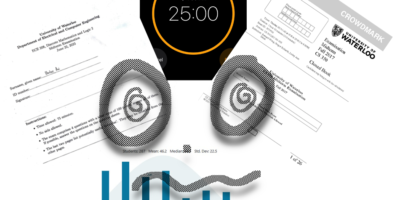Currently, the Canadian government is in the process of admitting 25,000 Syrian refugees into Canada. The selection process prioritizes women and complete families deemed “in danger”, and omits single men (the selection criteria are a separate debate). Once the refugees arrive in Canada, they are transported to a community and given basic necessities, lodging, and orientation to life in Canada. A refugee can be sponsored privately, or by the government. If you want to sponsor a refugee, or learn more about the refugee plan, the Government of Canada website has a very detailed section about it.
The plan to take in 25,000 Syrian refugees has spawned a debate here in Canada. Why help them out, when there are already homeless and poor Canadians who need our help too? How many are too many? Why take the risk, when some of them could be terrorists? Aren’t they just economic refugees, looking to abuse the immigration system to steal our jobs? I think a lot of the people asking these questions haven’t taken a serious look at the facts and implications of the refugee plan. Let’s address each of these concerns.
Firstly, Canada has been taking in refugees for a long time. During and after the Vietnam War, over 100,000 Vietnamese refugees relocated to Canada. More recently, in 2014 Canada admitted around 11,000 refugees. The rationale for helping these people is straightforward – they’re being bombed, they’re being shot at, are we going to leave them to die or are we going to protect them? Of course we’re going to help them. If your buddy or mother or cat was being bombed, you would never hesitate to save them. Nothing makes a refugee any less deserving of help. The argument for helping the poor and homeless instead of the refugees is a bit more of a grey area. The poor aren’t being bombed or shot at. The Syrians are. But, an estimated 1,300 homeless people die each year. Shouldn’t the available shelter be given to the homeless? The issue is that the problems faced by homeless are diverse: addiction, mental illness, etc. Giving them money and shelter does not always help them. Each homeless person must be treated for their specific situation. With the refugees, the help has a clear effect: bring the refugees to Canada, and they won’t be bombed anymore. This is why it is important that we help both the poor and the refugees.
Since it is right to help the refugees, the next question is how many to help. An estimated 3 million Syrians have already fled the country. Canada could not take in all of the 3 million refugees without a nationwide effort to build more shelter, provide funding, etc. Obviously this is unrealistic. It makes more sense to take in as many refugees as we can with the resources we’ve got, and encourage other nations to do the same. 25,000 refugees is a great start, but Canada is a huge country. We’ve got the room and resources to help more refugees, and we should continue to admit more as we make shelter and resources available.
One of the main arguments of those who oppose helping refugees is that terrorists might be sneaking into our country. It is impossible to argue that there is no chance that a refugee could also be a terrorist. But it is also impossible to say that your buddy or your mother is definitely not a terrorist – it is unlikely, but still within the realm of possibility. The argument is then that refugees have a higher chance of being terrorists, compared to your buddy, mother, or the homeless. This is why the selection process is in place. The purpose of the selection process is to identify families who pose no security risk. Single males are prohibited from becoming refugees because the government deemed them a risk to national security. In this way, the risk of a terrorist entering Canada is minimized.
Lastly, some argue that many of the Syrians are not actually refugees, but instead economic migrants looking for a better quality of life. Although they are allowed to apply for immigration as non-refugees, it is claimed that they may be pretending to be refugees for a better chance at gaining entry to Canada. Again, this is where the selection process saves the day. The selection process identifies families displaced by war – those being bombed, shot at, etc. These families are genuine refugees and allowed entry into Canada. Economic migrants (typically single males) are not granted refugee status. It could be argued that all refugees are economic migrants, even if they are genuinely in danger, because they are coming to a country with a higher standard of living than they had previously. But this is no reason to reject all refugee claims. The bottom line is that the economic status of people who are in danger should not be a factor on deciding whether or not they are deserving of help. If a poor man or a rich man were drowning, why would one deserve rescue more than the other?
Overall, it is important that we continue to allow Syrian refugees to come to Canada. We can’t stand by idly as people die. We want to provide a shelter and resources to Syrian families who have had to flee their homes to escape war. But, at the same time, we want to prevent terrorists from entering Canada and prevent economic migrants from taking resources from those who need it most. To achieve this, a selection process is used to ensure that deserving families can come to Canada. The Canadian government must continue to create shelters and provide resources so that refugees have a safe location to start a new life.
This entire debate is well summarized by Rick Mercer in his recent “Rick’s Rant”:
“In 1979, we accepted 60,000 Vietnamese boat people. That’s us being the good guys. But in 1939, we said no to a ship carrying 960 Jews. We sent them back to Europe. Many perished in concentration camps. That too is part of our history, and that’s why it’s so important we get this one right”.




Leave a Reply